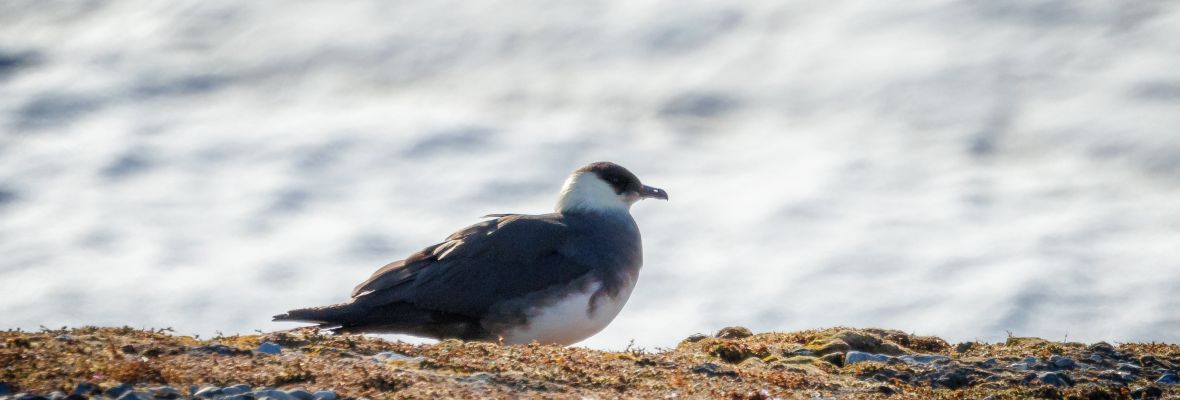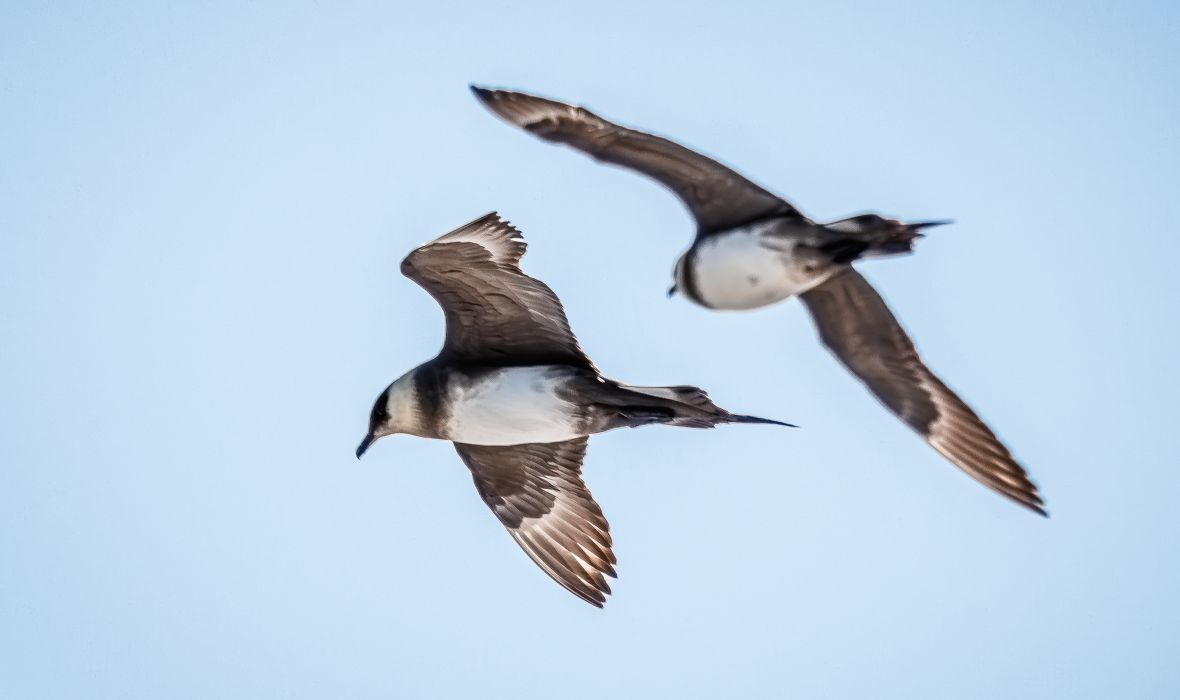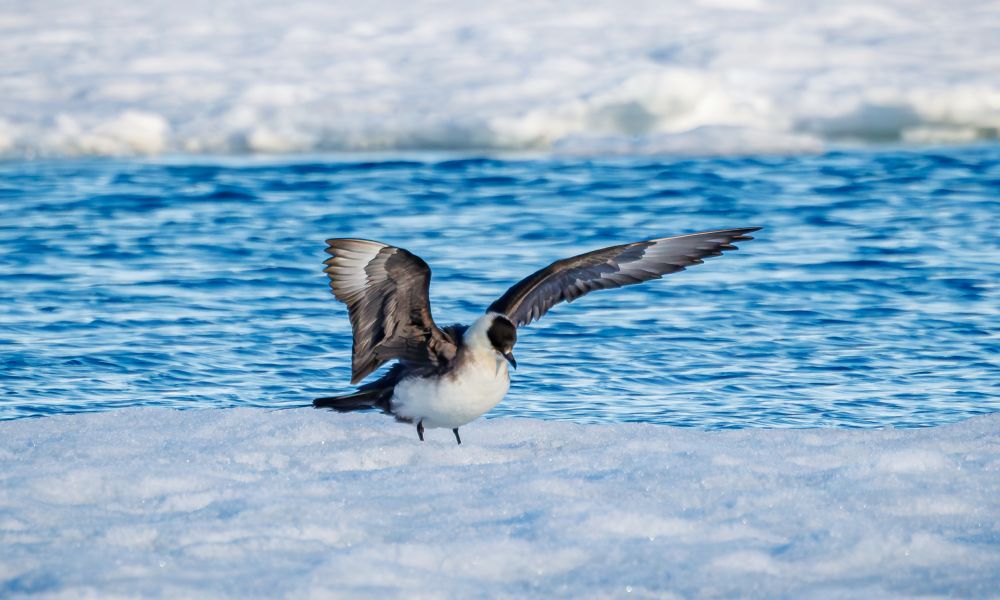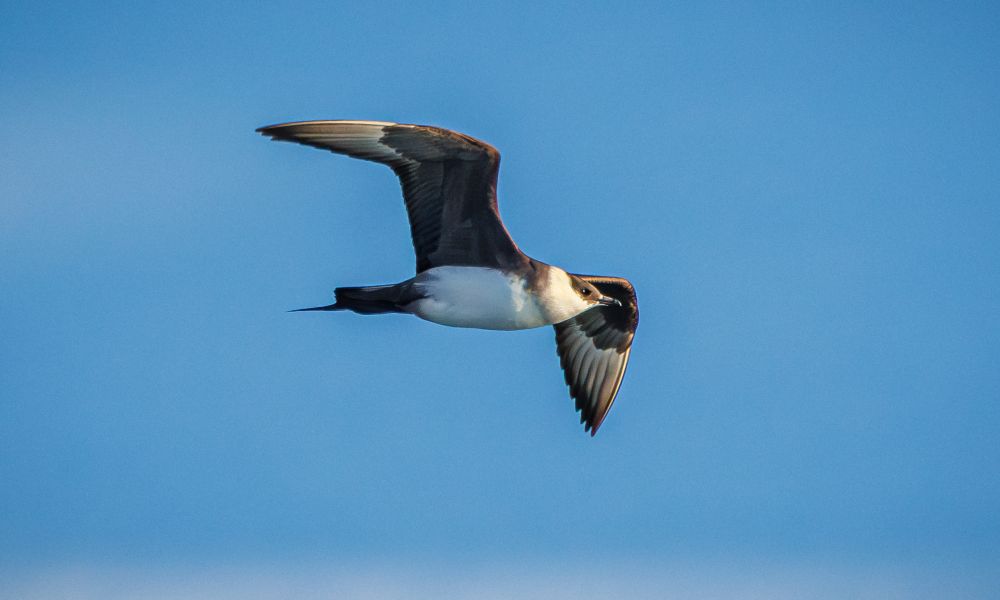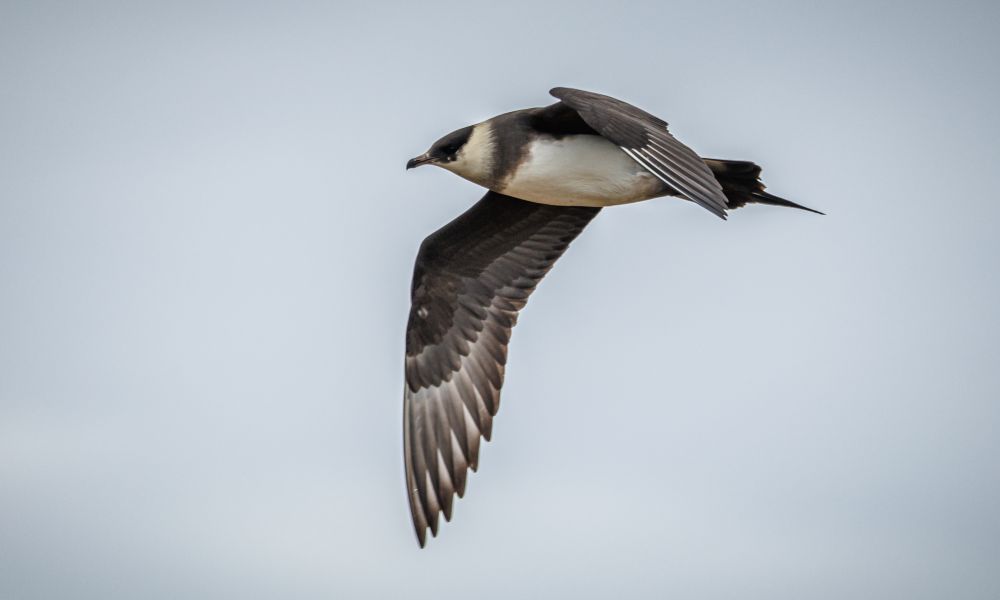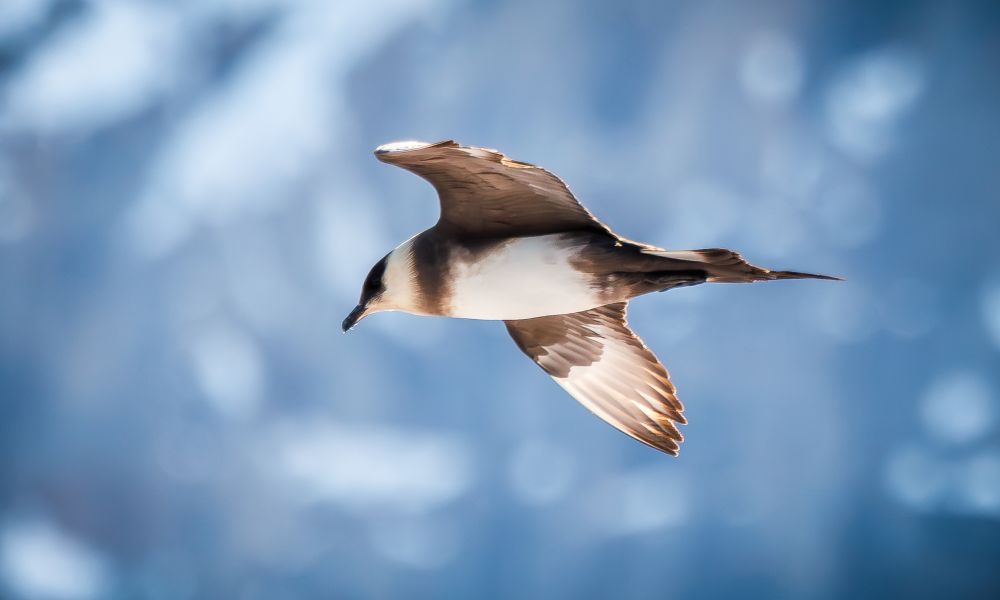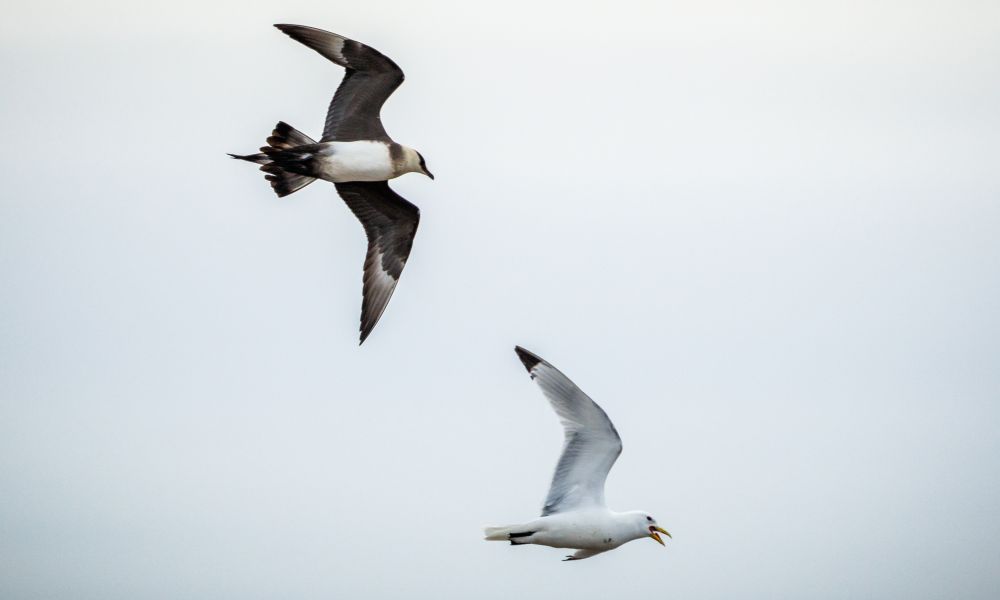Where Do They Live?
Besides having ‘Arctic’ in its main name, this mid-sized bird is a species that our guests can spot in both the Arctic and Antarctica. They spend most of their time flying above the oceans during migration. In the northern hemisphere, they are in both the Arctic and sub-Arctic tundra regions across Iceland, Svalbard, Greenland, and northern Canada. During the non-breeding season, this bird migrates to the southern oceans, where it is often seen offshore near the Falkland Islands, South Georgia, and the Antarctic Peninsula.
What Does the Arctic Skua Eat?
Their diet mainly consists of fish, small birds, and insects. However, they are best known for kleptoparasitism - stealing food from other seabirds in mid-air. They aggressively chase these birds, such as terns, gulls, and puffins, forcing them to drop their food so they can steal it. This daring behaviour has earned them the names “parasitic jaeger” and “pirates of the sea”.
What Are the Biggest Threats to the Arctic Skua?
Major threats to the Arctic skua bird include climate change affecting Arctic breeding grounds, predation by Arctic foxes, and habitat disturbances from human activities. Additionally, changes in prey availability and marine pollution are rising concerns for the Arctic skua.
How Fast Is an Arctic Skua?
To steal food from other animals, they need to be quick. The Arctic Skua in flight is incredibly agile and swift, capable of reaching speeds of 50 kph (31 mph) with wings that measure up to 125 cm (4.1 ft).



